#tetsujin 28-gou
Explore tagged Tumblr posts
Text

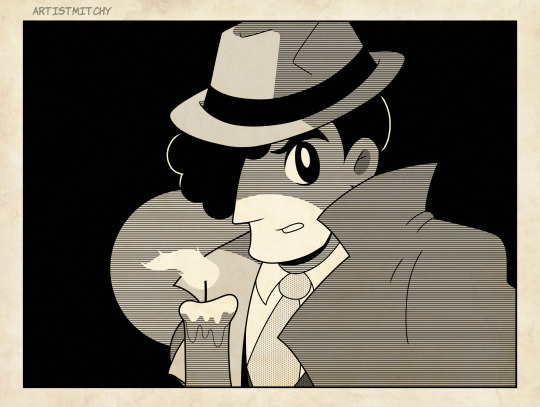
Mitsuteru Yokoyama style study, featuring Kenji Murasame. I wasn't sure which version I liked better, so I'll post both.
I used this screenshot from the Giant Robo OVAs for reference:
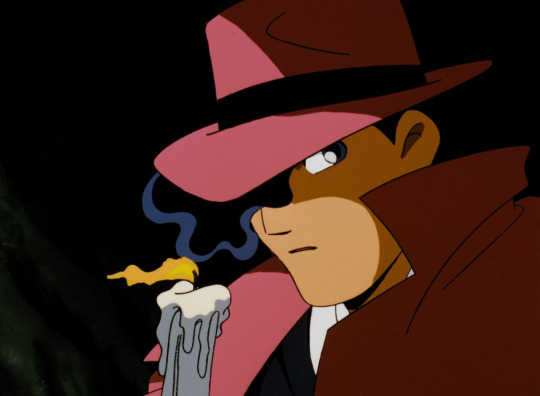
#Giant Robo#ジャイアント���ボ#Giant Robo OVA#ジャイアントロボ OVA#Giant Robo The Animation#ジャイアントロボ THE ANIMATION#Giant Robo The day the earth stood still#Tetsujin 28#鉄人28号#Tetsujin 28 go#Tetsujin 28 gou#Kenji#Kenji Murasame#Mitsuteru Yokoyama#横山光輝#My art
27 notes
·
View notes
Text
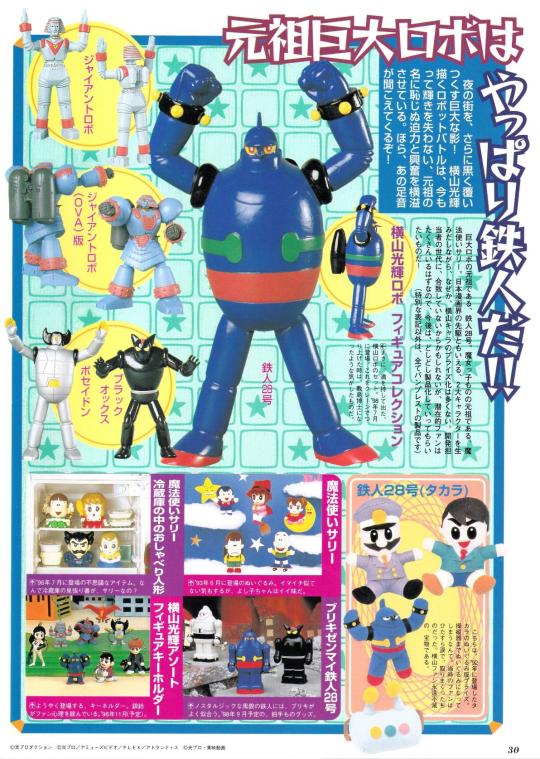
Banpresto Misteru Yokoyama character catalog items (1998)
#Banpresto#Mitsuteru Yokoyama#Tetsujin#Tetsujin 28 gou#Tetsujin 28#Sally the witch#Giant Robo#Giant Robo OVA#Babel II#Babel Nisei#Figure#Plush#Keychain#Toys#Vintage manga#Vintage anime#Mod's post
47 notes
·
View notes
Text
JVC Post #7
Moeagare! Moeagare! Moeagare! GANDAMU!

The 70s was a golden era for anime, and among all of the glittering jewels such as The Castle of Cagliostro, Galaxy Express 999, The Rose of Versailles, and of course Ashita no Joe, Mobile Suit Gundam is easily the most recognizable and certainly the most beloved. While I haven't made the time to finish the original series all the way through, I love Gundam. The series exploded in popularity after Gunpla took off and is now regarded as one of the most culturally significant pieces of media in Japan, comparable to Star Wars in the west according to Wikipedia.
Gundam also spawned the "real robot" genre of mecha, which is often compared to hard science fiction. This lead to anime like Armored Trooper Votoms, Macross, and Patlabor, three anime that really took the genre to its limits.
Gundam stood out among other mecha shows of the time in that it depicted the Gundam as a true weapon and a tool rather than a magical or wondrous robot (see Tetsujin 28-gou or Mazinger-Z). This realism in many aspects of the show, great character development and interactions, and the great mech designs helped Gundam become so appealing. It's certainly stylish.

The Anime Machine by Thomas Lamarre had been in my bookmarks for a while, but I had forgotten until now. The snippet we were provided was interesting. I didn't follow it entirely, but I think his connections from technology and the experience through it to the spread and formation of anime is interesting. I noticed that he does not mean machine in the traditional sense, rather in an abstract way focusing on the nature of and the input and output generated by the "animetic machine". The influence of Deleuze and Guattari on his ideas is apparent, but I can't go too deep into that because I don't know anything significant enough about them.
He does connect this primarily to the technology behind(?) the machine, it looks like. He seems to create the basis for this machine model technologically by pointing to the movement and depth in anime generated by the compositing process (the "animetic interval"). His Heideggerian point of view on anime and technology being much like the hydroelectric plant in the Rhine, transforming the very orientation one has toward the subject, is something I assume he expands on later in the book.
The train metaphor might have had something to do with this. Just like the silver chalice "arrives" when the silversmith's work brings it "out of concealment", the animetic machine forms the layers of animation through the apparatus (the animation stand, the train) and through the "traveler" within it (the producer(fan), the passenger). Here's something silly it made me think of.
The way that people experience through technology is seen within the autonomous "animetic machine" (working through both the animation stand and reflection) and thus within anime is definitely a very intriguing idea. As far as I can tell he is saying that anime, much like modern technology, is something that produces those that produce it, and that the animetic machine can be understood via both the technology it "thinks" and the audience within it.
0 notes
Link
Check out this listing I just added to my Poshmark closet: Chou Dendou Robo Tetsujin 28-Gou FX Animation Cel, & Sketch of Masato .
0 notes
Photo

Tetsujin 28-gou - 2004 (Playstation 2)
#tetsujin 28#gigantor#tetsujin 28-go#tetsujin 28-gou#tetsujin#mecha#mech#ps2#playstation 2#playstation#game#gaming#videogame#video game#robot
564 notes
·
View notes
Photo

Gigantor
Genre : adventure, sci-fi, shonen, mecha, drama, historical
Category : Аnime series / Аnime film / Special
Episodes : 96 duration 25 min, (The New Adventures of Gigantor) 51 duration 25 min, (Choudendou Robo Tetsujin 28-gou FX) 47 duration 25 min, (Tetsujin 28-gou (2004)) 26 duration 25 min, (Tetsujin 28-gou Gao!) 151 duration 8 min / (Tetsujin 28-gou: Hakuchuu no Zangetsu) 95 min / ( Tetsujin 28-gou: Tanjou-hen) 25 min
#Gigantor#Tetsujin 28-gou#The New Adventures of Gigantor#Tetsujin 28-go FX#Iron Man 28#Tetsujin 28-go#anime#retro anime#anime series#anime film#special#anime 60s#anime 80s#anime 90s#anime adventure#anime sci-fi#shonen#mecha#anime drama#anime historical
13 notes
·
View notes
Video
youtube
Tetsujin 28 Gou (PS2): Co-op
20 notes
·
View notes
Text
Anime List from “History of Mecha: The 80s”
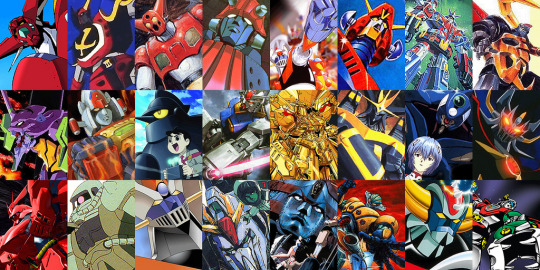
As promised, here are two lists for you related to “History of Mecha Pt. 2: The 80s”. The first list covers all of the anime we mentioned during the course of the panel and in the order in which they were mentioned. The second, longer list below is the one which includes everything in the applicable decades that fit into our determinate factors for mecha anime that we ascribe to the purposes of the panel series. Do enjoy!
Shows in the panel:
1. Mobile Suit Gundam [4-7-1979 – 1-26-1980]
2. Mobile Suit Gundam I [3-14-1981]
3. Mobile Suit Gundam II: Soldiers of Sorrow [7-11-1981]
4. Mobile Suit Gundam III: Encounters in Space [3-13-1982]
5. Invincible Robo Trider G7 [2-2-1980 – 1-31-1981]
6. GodMars [10-2-1981 – 12-24-1982]
7. Tetsujin-28 Gou [10-3-1980 – 9-25-1981]
8. Space Runaway Ideon [5-8-1980 – 1-30-1981]
9. Space Warrior Baldios [6-30-1980 – 1-25-1981]
10. Fang of the Sun Dougram [10-23-1981 – 3-25-1983]
11. Combat Mecha Xabungle [2-6-1982 – 1-29-1983]
12. Aura Battler Dunbine [2-5-1983 – 1-21-1984]
13. Armored Trooper Votoms [4-1-1983 – 3-23-1984]
14. Super Dimensional Fortress Macross [10-3-1982 – 6-26-1983]
15. Giant Gorg [4-5-1984 – 9-27-1984]
16. Dallos [12-21-1983 – 7-5-1984]
17. Megazone 23 [3-9-1985 – 12-22-1989]
18. Leda: The Fantastic Adventure of Yohko [3-1-1985]
19. Five Star Stories [3-11-1989]
20. Blue Comet SPT Layzner [10-3-1985 – 6-26-1986]
21. Super Bestial Machine God Dancougar [4-5-1985 – 12-27-1985]
22. Mobile Suit Zeta Gundam [3-2-1985 – 2-22-1986]
23. Mobile Suit Gundam ZZ [3-1-1986 – 1-31-1987]
24. Metal Armor Dragonar [2-7-1987 – 1-30-1988]
25. Mobile Suit Gundam: Char’s Counterattack [3-12-1988]
26. Mobile Suit Gundam 0080: War in the Pocket [3-25-1989 – 8-25-1989]
27. Aim for the Top! Gunbuster [10-7-1988 – 7-7-1989]
28. Makyou Gaiden Le Deus [12-1-1987]
29. Metal Skin Panic MADOX-01 [12-15-1987]
30. Relic Armor Legaciam [11-28-1987]
31. Patlabor: The Mobile Police [4-25-1988 – 6-25-1989]
32. Patlabor: The Movie [7-15-1989]
33. Patlabor: The Mobile Police – The TV Series [10-11-1989 – 9-26-1990]
All mecha shows:
1. Invincible Robo Trider G7 [2-2-1980 – 1-31-1981]
2. Space Emperor God Sigma [3-19-1980 – 2-25-1981]
3. Space Runaway Ideon [5-8-1980 – 1-30-1981]
4. Space Warrior Baldios [6-30-1980 – 1-25-1981]
5. Tetsujin-28 Gou [10-3-1980 – 9-25-1981]
6. Saikyou Robot Daiouja [1-31-1981 – 1-30-1982]
7. Hyakujuu-Ou GoLion [3-4-1981 – 2-24-1982] {Voltron}
8. Mobile Suit Gundam I [3-14-1981]
9. Sengoku Majin Goushougun [7-3-1981 – 12-28-1981]
10. Mobile Suit Gundam II: Soldiers of Sorrow [7-11-1981]
11. GodMars [10-2-1981 – 12-24-1982]
12. Galactic Whirlwind Braiger [10-6-1981 – 6-30-1982]
13. Fang of the Sun Dougram [10-23-1981 – 3-25-1983]
14. Space Warrior Baldios [12-29-1981] {Film}
15. Combat Mecha Xabungle [2-6-1982 – 1-29-1983]
16. Gyakuten Ippatsuman [2-13-1982 – 3-26-1983]
17. Armored Fleet Dairugger XV [3-3-1982 – 3-23-1983]
18. Mobile Suit Gundam III: Encounters in Space [3-13-1982]
19. Sengoku Majin Goushougun [4-24-1982] {Film}
20. Makyou Densetsu Acrobunch [5-5-1982 – 12-24-1982]
21. Galactic Gale Baxingar [7-6-1982 – 3-29-1983]
22. Space Runaway Ideon: Be Invoked [7-10-1982]
23. Space Runaway Ideon: A Contact [7-10-1982]
24. Super Dimensional Fortress Macross [10-3-1982 – 6-26-1983]
25. Warrior of Love Rainbowman [10-10-1982 – 3-27-1983]
26. GodMars: The Movie [12-18-1982]
27. Akuu Daisakusen Srungle [1-21-1983 – 1-27-1984]
28. Aura Battler Dunbine [2-5-1983 – 1-21-1984]
29. Kousoku Denjin Albegus [3-30-1983 – 2-29-1984]
30. Armored Trooper Votoms [4-1-1983 – 3-23-1984]
31. Galactic Gale Sasuraiger [4-5-1983 – 1-31-1984]
32. Super Dimension Century Orguss [7-3-1983 – 4-8-1984]
33. Psychoarmor Govarian [7-6-1983 – 12-28-1983]
34. Xabungle Graffiti [7-9-1983]
35. Document Fang of the Sun Dougram [7-9-1983]
36. Genesis Climber Mospeada [10-2-1983 – 3-25-1984]
37. Special Powered Armor Troop Dorvack [10-7-1983 – 7-6-1984]
38. Ginga Hyouryuu Vifam [10-21-1983 – 9-21-1984]
39. Dallos [12-21-1983 – 7-5-1984]
40. Super High Speed Galvion [2-3-1984 – 4-29-1984]
41. Heavy Metal L-Gaim [2-4-1984 – 2-23-1985]
42. Video Warrior Laserion [3-4-1984 – 2-3-1985]
43. Giant Gorg [4-5-1984 – 9-27-1984]
44. God Mazinger [4-5-1984 – 10-23-1984]
45. Super Dimensional Calvary Southern Cross [4-15-1984 – 9-30-1984]
46. Super Dimensional Fortress Macross: Do You Remember Love? [7-7-1984]
47. Super Robot Galatt [10-5-1984 – 4-5-1985]
48. Panzer World Galient [10-5-1984 – 3-29-1985]
49. Sei Juushi Bismark [10-7-1984 – 9-29-1985]
50. Armored Trooper Votoms: Kachua Kara no Tayori [10-28-1984] {Film}
51. Ginga Hyouryuu Vifam: Atsumatta 13-nin [12-21-1984] {Film}
52. Ginga Hyouryuu Vifam: Kieta 12-nin [2-25-1985] {Film}
53. Leda: The Fantastic Adventure of Yohko [3-1-1985]
54. Mobile Suit Zeta Gundam [3-2-1985 – 2-22-1986]
55. Megazone 23 [3-9-1985 – 12-22-1989]
56. Super Dimension Century Orguss Memorial [3-28-1985 – 5-28-1985]
57. Super Bestial Machine God Dancougar [4-5-1985 – 12-27-1985]
58. Dallos Special [5-8-1985]
59. Armored Trooper Votoms: Vol. 1 Stories of the “A.T. VOTOMS” [6-21-1985]
60. Armored Trooper Votoms: Vol. 2 Highlights of the “A.T. VOTOMS” [7-20-1985]
61. Armored Trooper Votoms: The Last Red Shoulder [8-21-1985]
62. Genesis Climber Moespeda: Love, Live, Alive [9-1-1985]
63. Ginga Hyouryuu Vifam: Keito no Kioku – Namida no Dakkai Sakusen [9-25-1985]
64. Blue Comet SPT Layzner [10-3-1985 – 6-26-1986]
65. Ninja Senshi Tobikage [10-6-1985 – 7-27-1986]
66. Panzer World Galient OVA [1-26-1986 – 8-5-1986]
67. Armored Trooper Votoms Recaps [2-21-1986 – 2-20-1988]
68. Mobile Suit Gundam ZZ [3-1-1986 – 1-31-1987]
69. Super Bestial Machine God Dancougar: Requiem for Victims [4-21-1986]
70. Armored Trooper Votoms: Big Battle [7-5-1986]
71. Gall Force 1: Eternal Story [7-28-1986]
72. Blue Comet SPT Layzner [8-21-1986 – 10-21-1986]
73. Heavy Metal L-Gaim I: Pentagona Window + Lady Gyabure [11-5-1986]
74. Super Bestial Machine God Dancougar: Juusenk-tai Songs [1986]
75. Heavy Metal L-Gaim I: Farewell My Lovely + Pentagona Doors [1-10-1987]
76. Dougram vs Round-Facer [1-21-1987]
77. Metal Armor Dragonar [2-7-1987 – 1-30-1988]
78. Heavy Metal L-Gaim III: Full Metal Soldier [3-28-1987]
79. Super Bestial Machine God Dancougar: God Bless Dancougar [4-15-1987]
80. Super Dimensional Fortress Macross Flash Back 2012 [6-21-1987]
81. Dead Heat [8-7-1987]
82. Great Planet Evil-Destroyer Dangaioh [9-28-1987 – 7-25-1989]
83. Relic Armor Legaciam [11-28-1987]
84. Makyou Gaiden Le Deus [12-1-1987]
85. Metal Skin Panic MADOX-01 [12-15-1987]
86. O-Parts: Oman [1987]
87. Aura Battler Dunbine OVA [2-25-1988 – 8-25-1988]
88. Mobile Suit Gundam: Char’s Counterattack [3-12-1988]
89. Armored Trooper Votoms: Red Shoulder Document – Roots of Treachery [3-19-1988]
90. Patlabor: The Mobile Police [4-25-1988 – 6-25-1989]
91. GodMars: The Legend of 17 Years [6-5-1988]
92. Gunbuster [10-7-1988 – 7-7-1989]
93. Starship Troopers [10-25-1988 – 12-17-1988]
94. Armor Hunter Mellowlink [11-21-1988 – 4-28-1989]
95. Hades Project Zeorymer [11-26-1988 – 2-21-1990]
96. Five Star Stories [3-11-1989]
97. Rhea Gall Force [3-21-1989]
98. Mobile Suit Gundam 0080: War in the Pocket [3-25-1989 – 8-25-1989]
99. Madou King Granzort [4-7-1989 – 3-2-1990]
100. Patlabor: The Movie [7-15-1989]
101. Ariel Visual [7-21-1989 – 8-21-1989]
102. Patlabor: The Mobile Police – The TV Series [10-11-1989 – 9-26-1990]
103. Super Bestial Machine God Dancougar: Blazing Epilogue [12-16-1898 – 5-25-1990]
104. Gall Force: Earth Chapter [12-25-1989 – 12-1-1990]
#nos anime#anime#anime research#anime analysis#mecha#mecha anime#mecha history#history of mecha#real robot anime#super robot anime
30 notes
·
View notes
Text
primeros animes de la historia
hola denuevo hoy traigo un top de los animes mas antiguos es top 5 uwu espero que los disfrutan.

5. Mirai Kara Kita Shounen Super Jetter
Episodios: 52
Emisión: enero 1965 a enero 1966 3. Tetsujin 28-gou[Inglés: Gigantor]Buy nowEpisodios: 96Emisión: octubre 1963 a mayo 1965
4. Tetsujin 28-gou[Inglés: Gigantor]
Episodios: 96
Emisión: octubre 1963 a mayo 19652.
3. Sennin Buraku[Inglés: Hermit Village]
Episodios: 23
Emisión: septiembre 1963 a febrero
2. Tetsujin 28-gou[Inglés: Gigantor]
Episodios: 96
Emisión: octubre 1963 a mayo 1965
1. Tetsuwan Atom[Inglés: Astro Boy]
Episodios: 193
Emisión: enero 1963 a diciembre 1966
los 10 primeros animes de la historia del anime(8:00am del 28 de octubre 2017).Recuperado de https://honeysanime.com/es/los-10-primeros-animes-de-la-historia-del-anime/
2 notes
·
View notes
Text

I'm sorry I haven't been as active this week. I've been taking care of personal projects and I've been busy with my life. Thank you all for your support in my work!!
#Tetsujin#Tetsujin 28#Tetsujin 28 Gou#鉄人28号#Shotaro#Shotaro Kaneda#Kenji#Kenji Murasame#Mitsuteru Yokoyama#横山光輝#Vintage manga#Vintage anime#My art
31 notes
·
View notes
Photo
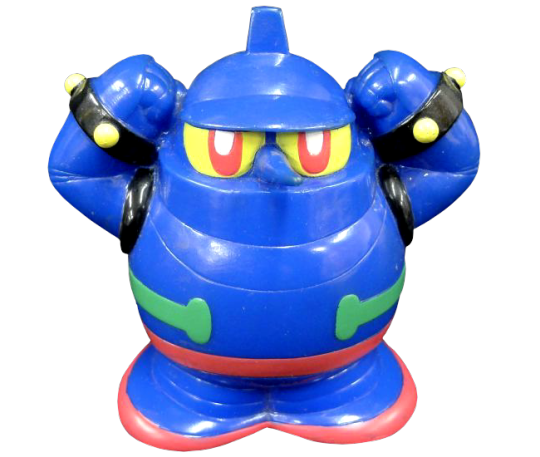

Banpresto Tetsujin 28 Go sofubi bank figures (1999)
#Tetsujin#Tetsujin 28#Tetsujin 28 Go#Tetsujin 28 Gou#Black Ox#Mitsuteru Yokoyama#Banpresto#Figure#Toys#Mod's post
6 notes
·
View notes
Photo


Looks like we found out about a giant piloted robot manga even older than Tetsujin-28 gou, and that would be "Genshiryoku Jinzoningen" (Atomic Power Android), from 1948 by Uno Kazumichi.
10 notes
·
View notes
Text
JVC Post #5
Kamuiden was very enjoyable, and It's undoubtedly a huge change in aesthetics from the previous readings. Soon after Tezuka Osamu helped blast manga into popularity, gekiga emerged as a direct challenge to the more childish manga aimed at kids that dominated the market, and Kamuiden seems to be a great example of that. The more grizzled and intense art style in addition to the more brutal and adultish themes/scenes mark this as markedly different than earlier manga like Tetsujin 28-gou or Sazae-san.
I can definitely see the societal and political themes within th work as mentioned by Kinsella in Adult Manga. Kamuiden is much more forward with it's commentary on class and resistance, at least compared to children's manga. I find it really interesting that this genre shift was also largely responsible for shifting the primary demographic for manga towards young adults. Kinsella provides really great insight into this shift.
Its also interesting to think about how manga and gekiga were viewed by people at the time. Obviously manga was associated with a clean, childish image, and gekiga with a rougher, rebellious image. I also enjoyed learning that manga grew through university students being into more serious manga with political undertones. I think there are a lot of examples of univeristy students contributing to big advances in the arts. I was glad they mentioned Ashita no Joe as well, if only briefly. To think manga would have such a profound affect on politics. Or maybe the further insertion of politics had a profound affect on manga?
In regards to Kamuiden: The fact that it was published in GARO was also cool to learn. I'm a fan of a lot of the works that were published in GARO. Like Kinsella mentions, a lot of experimental, avant-garde, and otherwise offbeat material made its way into GARO, and its clear that the surfacing of this kind of material began to showcase just how much potential manga had as an art form. From what I can tell, gekiga in it's own right was also quite experimental comparing it to its mainstream contemporaries.
If you want to check out some of the avant-garde and offbeat material published in GARO, here are some of my recommendations:
Nekojiru Udon by Nekojiru
(^ also known as Cat Soup)
The Color of Rain (雨の色) by Oji Suzuki (untranslated)
The Tragedy of Princess Rokunomiya (六の宮姫子の悲劇) by Kuniko Tsurita (untranslated)
(^ One of my favorites. Kuniko Tsurita wrote lots of great stuff, but not a lot of it is easily available)
Lots of GARO media goes untranslated officially for what I assume is economic reasons, but if you can read Japanese they released a massive collection which is available on the internet archive. The hyperlink goes to 六の宮姫子の悲劇。

0 notes
Link
Check out this listing I just added to my Poshmark closet: Chou Dendou Robo Tetsujin 28-Gou FX Animation Cel B/g & COA of Tetsujin-28 FX .
0 notes
Text
Tetsujin 28 Gou Ps2 Iso Downloads

Movies & TV New Releases Best Sellers Deals Blu-ray 4K Ultra HD TV Shows Kids & Family Anime All Genres Prime Video Your Video Library 1-16 of 26 results for Movies & TV: 'the longest day in color'. Longest day Movie In Colour 1962 D-Day Normandy 1944 JUNE 6TH. Longest day Movie In Colour 1962 D-Day Normandy 1944 JUNE 6TH. The Longest Day (1962) Full Color Version On June 6, 1944, the Allied Invasion of France marked the end of Nazi domination over Europe. The attack involved 3,000,000 men 11,000 planes and 4,000 ships, comprising the largest armada the world has ever seen. Presented in a colorized version, The Longest Day is a vivid, h. The Longest Day is one of those movies that's just too good not to be watched not just a few times but MANY times. While certainly Hollywood and definitely long and in glorious Black and White (and all shades of gray in between), if there was one movie that best depicts the invasion, this is it. The longest day colorized movies. The Longest Day (1962). There is a digitally remastered colorized version of the film. There are two distinct versions of this film: in one, all the characters.
Ave Maria Schubert Maria Callas Download Chrome Unlock Crack Iphone Download Game Perang Hp Java 320x240 Velamma Rar Space Channel 5 Ps2 Iso Files Rapidsketch 2 5 Keygen Crack Winuae Kick Rom 1.3 Tetsujin 28 Gou Ps2 Iso Roms What Does A Hole Punched Drivers License Mean In California Outlook Lan Messenger Keygen Crack. Tetsujin 28 Gou Ps2 Iso Downloads. The following is a generic driver for the devices listed below. Note that all these devices use the same chipsets so the software works on all of them. This is the latest Bluetooth driver for these devices which are listed. This game is really fun. To play two players you have to go into single player and save first then go back to the title and use the second option.
Tetsujin 28 Wiki
Tetsujin 28 Go
Tetsujin 28 Gou 1980
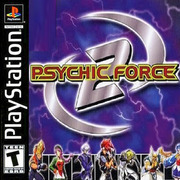
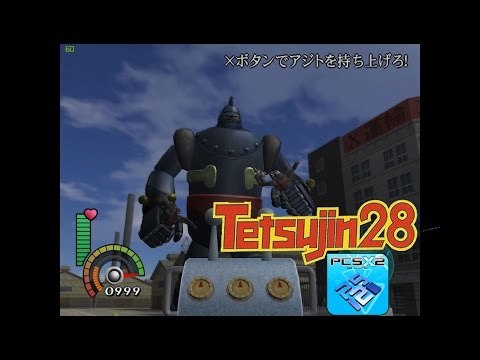
Magix Music Maker 2013 Premium Free Download; Altium Designer 10 0 22 Keygen Idm; Tetsujin 28 Gou Ps2 Iso Converter; Rpes 2012 V2 Torent Iso; Download Zone Cod Mw3; Condor Mdr2 11 Manual Treadmill; Nas Vmware Appliance.
Tetsujin 28 Gou Ps2 Iso On Ps3 Winning Eleven 2000 Psx Iso Emuparadise Autodata Key Programming Manual Sims 3 Helicopter Download Free Jaf Setup 1.98 64 Free Download Building Materials By Rangwala Pdf Free Download Xforce Adobe Cs6 Keygen Invalid Request Code Android Datalogic Quickscan M2 Driver Download.
ROMs / Bandai Wonderswan ROMs
| # | A | B | C | D | E | F | G | H | I | J | K | L | M | N | O | P | Q | R | S | T | U | V | W | X | Y | Z |
Viewing Bandai Wonderswan ROMs ROMs starting with T
Jul 29, 2019 Download texture pack now! The Minecraft Texture Pack, SpiderMan Texture Pack, was posted by Braiton77. Just a Texture I messed around with. Not much there though. Please Diamond this is my first post on PMC. Thanks to Freezo for helping with the pictures! Minecraft texture pack 1.15.2.
Tetsujin 28 Wiki
NameSizeDLsTaikyoku Igo - Heisei Kiin (Japan)103.08 kb239Tanjou Debut for WonderSwan (Japan)935.56 kb250Tare Panda no GunPey (Japan)377.06 kb230Tekken Card Challenge (Japan)446.24 kb246Terrors (Japan)2.32 mb312Terrors 2 (Japan)2.68 mb341Tetris (Japan)94.67 kb307Tetsujin 28 Gou (Japan)3.08 mb436Time Bokan Series - Bokan Densetsu - Butamo Odaterya Doronbou (Japan)673.85 kb252Tokyo Majin Gakuen - Fuju Houroku (Japan)2.64 mb279Tonpuusou (Japan)444.25 kb249Trump Collection - Bottom-Up Teki Trump Seikatsu (Japan)114.60 kb201Trump Collection 2 - Bottom-Up Teki Sekaiisshuu no Tabi (Japan)139.04 kb237Turntablist - DJ Battle (Japan)1.90 mb236

Tetsujin 28 Go
Tetsujin 28 Gou 1980

0 notes
Text
I suspect that this goes too far in the other direction and the correct answer here is “both, and also neither”.
Honestly, the best way to look at this might be to compare to the one other anime with comparable impact on its genre - you know, Eva. NGE came out in the 1995 Winter season. For the next decade or so afterwards, AFAICT (and I’ve trawled MAL listings to double-check this before) basically every mecha show released fell into one of three categories:
- Direct responses to Eva (The Big O, RahXephon, Bokurano as a late example, and I’m pretty sure I’m forgetting another obvious one), plus the interesting case of Martian Successor Nadesico, which almost certainly has some Eva influence but came out early enough that depending on the specifics of the production process the basic concept could be either a direct response or the result of convergent evolution. Plus, of course, Gurren Lagann, which ends the direct response period but which was itself very much a direct response precisely in how it hewed more closely to the older Super Robot tone.
- Reboots/continuations of existing properties (Tetsujin 28-gou, IIRC Gao Gai Gar counts as well, plus at least one I’m forgetting).
- Shows in the other, more realistic mecha subgenre, traditionally referred to in Western fandom of the era as Real Robot as opposed to Super Robot. Notable examples include Full Metal Panic, Patlabor, and of course the franchise that started and dominated the subgenre: Gundam. This subgenre mostly died out somewhere between the mid-2000s and the mid-2010s (depending on whether you count the likes of Arpeggio of Blue Steel and Knights of Sidonia as Real Robot or sci-fi with mechs), and the reason I’ve heard for this (and for the final decline of mecha more generally) is quite telling: Bandai Namco (the company that owns Gundam) cornered the market on mecha kits at around this time, to such an extent that it wasn’t worth trying to compete unless you were trying to sell something else like a manga or LN or anime merch. (AFAIK the Imaishi-centered Gainax crew that bailed to form Trigger is absolutely in the last of those buckets, which makes sense because Gainax’s approach to Eva was in many ways the pioneer of that strategy.)
Trying to parse the equivalent process for mahou shoujo/magical girls is more difficult because by the way I learned it the genre has either three or four subgenres rather than two (I’ll grab the old TVTropes classification names here, they work as well as any), but here’s my stab at it:
Cute Witch (sometimes split into two subgenres between the older Bewitched-inspired “majokko” plot where a girl from a magical land comes to Earth and the more recent type where an Earth girl gets magical powers): With the arguable exception of Little Witch Academia (an animator passion project that IIRC also has heavy Harry Potter influence), this subgenre died out well before Madoka (somewhere between the 1990s and the mid-2000s, I think, depending on how you’d classify a couple of the more shoujo-targeted early-2000s mahou shoujo like Ojamajo Doremi, Di Gi Charat, or Shugo Chara). (The way I hear it the series usually blamed for this happening is none other than Sailor Moon itself.)
Magic Idol Singer: AFAICT was almost completely unaffected by Madoka, and to my understanding it seems to have gotten at least some new shows into at least the early 2010s (Jewelpet seems to be a fairly clear example of the type, though admittedly S1 of that franchise predates PMMM). I’m honestly not sure whether the subgenre is dead or just shed the more serious works to where it’s just left with kids shows that never make it to the West (there’s a few such more serious shows from the early 2000s, notably Full Moon wo Sagashite and arguably Princess Tutu, but AFAIK none after), but either way we can probably chalk the decline of the subgenre to a single game: the original Idolmaster (not using the proper spelling since I can’t predict how the hellsite programming will respond to it...), progenitor of the modern idol franchise, which came out at about exactly the right time (mid-2000s) and was a massive hit at least among otaku. (I’m pretty sure Idolmaster predates the more shoujo-targeted idol anime, though I’m not familiar with the details of the transition or indeed exactly how much difference there is between the Aikatsus and PriParas of the world and the Magic Idol Singers before them. That said, one note: my understanding is that Love Live is less a youth-targeted franchise and more either a direct Idolmaster competitor or a hybrid-demographic franchise much like Precure itself.)
Magical Girl Warrior: The Sailor Moon subgenre, and the one both Pretty Cure and Madoka belong to. Here's where I suspect a one-two punch: Precure was already the biggest name in the genre (especially with Heartcatch, one of the best-regarded Precure series, having come out in 2010), and then Madoka came out and had nova-class impact on the genre... which killed off all the more traditional shows in the subgenre (in addition to the early experiments in more seinen mahou shoujo) *except* for Precure, which was big enough to survive mostly unmolested in the same way Gundam had been and which promptly proceeded to corner the toy market the same way Gundam did. (To be clear, this cornering might well have - probably would have? - happened anyways, but Madoka ensured it and accelerated the process by years. Didn’t help that the Nanoha franchise author hated the way the anime version had gone and it showed in Nanoha Force... and that Toei also owns the old mahou shoujo franchise that held up the best in Sailor Moon, which I had forgotten about and explains much.)
Oh my GOD Madoka isn’t the reason there aren’t many magical girl shows aimed at kids anymore. It’s because Pretty Cure is so popular it took over the market. Just listen to yourselves, imagine if people were saying Happy Tree Friends is the reason there wasn’t as many kids cartoons anymore. That’s how ridiculous you sound. People making kids shows don’t give two shits about a late night show for an older audience when it comes to their Saturday morning cartoon, they just know they can’t compete with PreCure.
#the fun question is Symphogear#I have no idea how that show happened#it's a Magic Idol Singer/Magical Girl Warrior hybrid with a side of mecha inspiration and TTGL-level hype#and came out after Madoka#not sure if it was Satelight deliberately trying to make mahou shoujo TTGL or what
353 notes
·
View notes